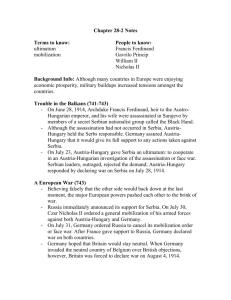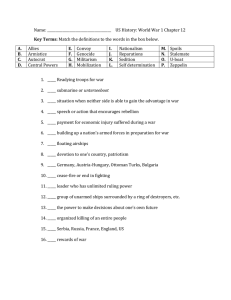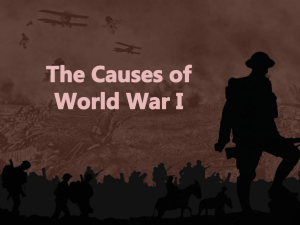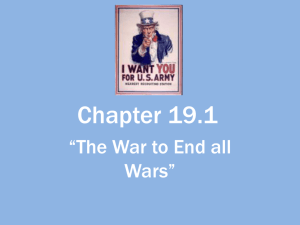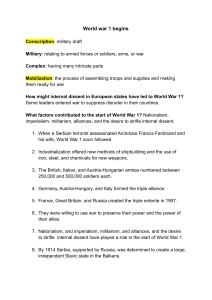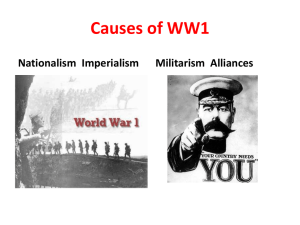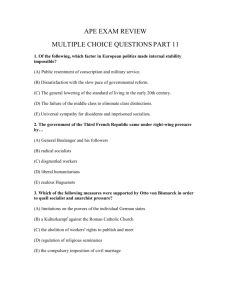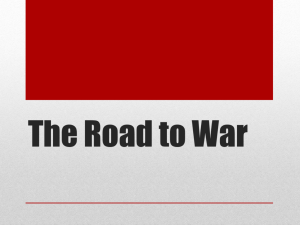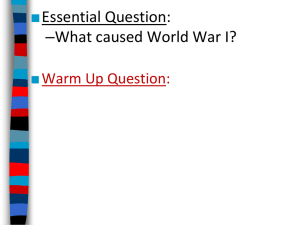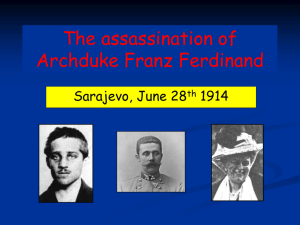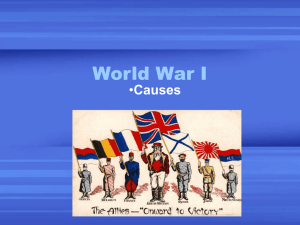Causes of World War I
advertisement
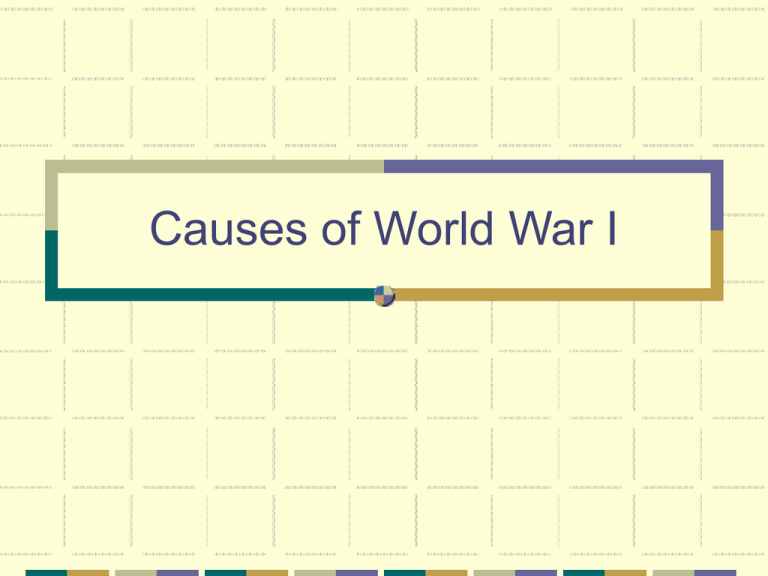
Causes of World War I Militarism The aggressive preparation for war heightened the already existing tensions in Europe. European armies double in size between 1890 – 1914. Armies Involved: •Russia (the largest with 1.3 million) •France(900,000) •Germany (900,000) •Great Britain, Italy, Austro-Hungary (250,000 – 500,000) European States were in competition with each other over the amount of land they controlled and this led to rivalries between the major European Powers. These nations saw their military forces (Army and Navy) as a way to both protect their territory and intimidate their enemies. (Power = National Honor) The military also served to suppress ethnic uprisings and internal public dissent within their borders. Systems of Alliances Europe’s major powers ally themselves to build their power and protect their interests: • Triple Alliance (1882) – Germany, Austria-Hungary, & Italy •Triple Entente (1907) – France, Great Britain, & Russia Not Exactly… The major trouble spot was the Balkan States between 1908-1914. Nationalist struggles in the Balkans The Balkan states were made up of three ethnic groups (The Catholic Croatians, the Muslim Bosnians, and the Orthodox Serbians) who each wished to be recognized as separate nations. These groups were Slavic minorities in the Habsburg Empire of Austria-Hungary. Serbia was an Independent State wanted to unite all Slavic peoples in Eastern Europe. International Interests in the Balkans Austria-Hungary saw the increase of Serbian power as a threat to their Empire. Russia saw the rise of Serbia as a way to get access to warm water ports for international trade. Austria Hungary annexed the kingdom of Bosnia to stop Serbian Expansion. Russia backed the Serbian protest of this Austro-Hungarian aggression. Internal Dissent The Major Powers also had to contend with protest groups within their society. Socialist Workers Movements protested to get more rights for the working class. Anarchists protested government control over the individual. These groups provided a motive for governments to go to war since this would make their protests illegal. The Assassination June 28, 1914 - Nineteen year old Bosnian Serb, Gavrillo Princip, member of the Serbian terrorist group, Black Hand, shoots and kills the heir to the Austro-Hungarian Empire, Archduke Francis Ferdinand and his wife, Sophia. This causes Austria-Hungary to threaten Serbia. Serbia turns to Russia for Support. Russia mobilizes troops at the Hungarian border. Austria-Hungary declares war on Russia. Germany declares war on both Russia and France. England declares war on Germany. Good question! Here’s an easy way to remember! M is for Militarism A is for Alliances N is for Nationalism I is for Internal Dissent. A is for Assassination Factual Questions (One Sentence Responses) What is Militarism? Which Country had the largest Army in Europe before World War I? What are the Balkans? Whose Assassination in 1914 started the conflict which became World War I? What was the Black Hand? Reflection Questions Paragraph Answers Why was militarism popular among the European Powers before World War I? Why was Serbia and Austria-Hungary in conflict over the Balkans? How did the Assassination of Franz Ferdinand lead to World War I? How did internal dissent offer European Governments an incentive towards War? THE END. Answer the questions and turn them in with your notes!
